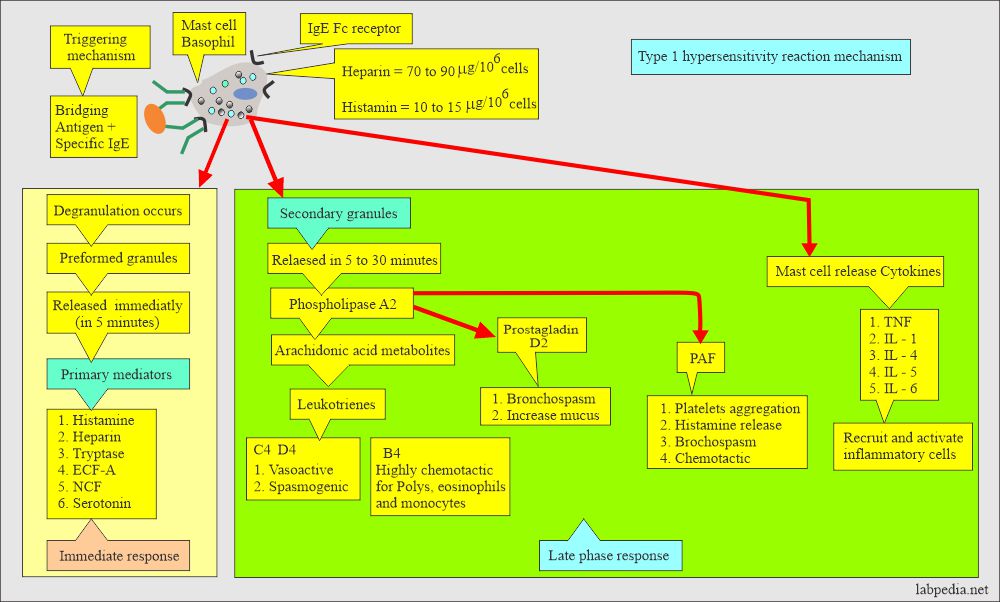Management of Anaphylactic reaction (Type 1 Hypersensitivity Reaction)
Anaphylactic reaction
What is the mechanism of an anaphylactic reaction?
- The following diagram summarises the anaphylactic reaction.
What is the initiator of the anaphylactic reaction starter?
- It may be seen in a patient during or after taking the blood sample.
- This reaction may occur due to trauma, pain, or an unusual situation.
- So, every technician and every ordinary person should know how to deal with such a situation.
- First, try to know how these patients will have a presentation.
What will the presentation of the Anaphylactic reaction be?
The patient will show the following:
- Nervousness.
- Itching of the skin.
- The feeling of confusion.
- Nausea, vomiting, and diarrhea.
- Abdominal or back pain.
- There will be flushing, pallor, or cyanosis.
- Urticaria.
- Laryngeal edema leads to stridor.
- Tachycardia.
- There is low blood pressure.
- Convulsions.
- Respiratory depression.
- Bronchospasm leads to asthmatic attacks.
How will you handle such a person with an Anaphylactic reaction?
- Immediately perform the following measures:
- Stop taking the blood sample process.
- Lie the patient flat and raise the legs.
-
- Maintain the airway.
- Call the doctor for help.
- Give an injection of antihistamine or decadron (hydrocortisone).
- Give oxygen if needed.
- Give cardiopulmonary resuscitation if needed.
- If the patient does not improve, transfer the patient to the hospital.
- This article is written for lab technicians and the general public. This will be helpful to everybody.


